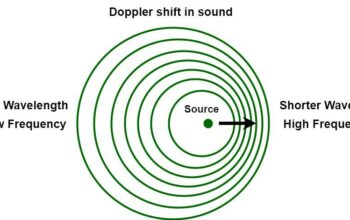Naming conventions in scientific instrumentation often reflect not only the technicality of the device but also the aspirations that led to its creation. Recently, NASA’s Gamma-Ray Telescope was assigned a new nomenclature, positioning it within a broader narrative of celestial exploration and discovery. As public interest mounts around this advanced instrument, it is crucial to delve into not just the rationale behind its rebranding, but also the multifaceted phenomenon of gamma-ray astronomy and the broader implications of its exploration.
At its core, gamma-ray astronomy involves the study of high-energy electromagnetic radiation emitted from astrophysical objects. These photons, characterized by their high frequency and energy, surpass the capabilities of traditional optical telescopes. Consequently, they unveil a universe layered with exotic phenomena, such as black holes, neutron stars, and supernova remnants. The implications of studying these enigmatic entities extend beyond sheer scientific curiosity; they hinge upon a fundamental desire to comprehend the very fabric of the cosmos and humanity’s place within it.
The renaming of NASA’s gamma-ray telescope could ostensibly serve as a rebranding initiative designed to enhance its visibility and promote public engagement. However, it insinuates deeper undertones related to the evolution of space research. The previous designation, while functional, may have lacked the inspirational gravitas needed to captivate a broader audience. Consequently, the new name is likely curated to evoke a sense of wonder and amplify the instrument’s relevance in contemporary astrophysical dialogues.
Moreover, names often hold profound significance in science. They encapsulate the essence of the instrument’s mission and aspirations, tethering complex scientific concepts to universal themes that resonate with the collective imagination. This phenomenon is not unique to NASA; similar trends are observed across various scientific fields. The renaming process serves to harmonize public perception with the scientific community’s objectives, ultimately fostering a more engaged global audience.
As discussions surrounding the telescope’s new name unfold, it is essential to reflect upon the complex social contract that exists between scientific institutions and the public. In an era of heightened technological advancement and accessibility of information, there exists a dual obligation: the necessity to disseminate knowledge in an engaging manner while simultaneously honoring the integrity of the scientific enterprise. The renaming of the gamma-ray telescope embodies this delicate interplay, striving to forge connections with individuals who might not have previously engaged with astrophysics.
The fascination with gamma-ray observations stems from several factors, not least of which is the inherent mystery of high-energy astrophysical processes. The universe, in its grandiosity, operates under rules that often defy human intuition. Black holes, for instance, represent the ultimate synthesis of matter and gravity, phenomena capable of warping time and space around them. Gamma-ray bursts, on the other hand, stand as some of the most potent explosions known in the cosmos, releasing unthinkable amounts of energy within mere seconds. Understanding these occurrences is tantamount to grasping the very underpinnings of the physical universe.
Furthermore, the unveiling of gamma-ray phenomena often correlates with advancements in technology. As our detection methods evolve, so too does our capacity to interpret the complexities of the universe. The interactions between high-energy particles and radiation can inform us about fundamental physics, such as quantum mechanics and general relativity. Every discovery made through gamma-ray observations contributes additional pieces to the puzzle of existence, a puzzle that provokes philosophical contemplation regarding the nature of reality itself.
NASA’s recent decision to rebrand the gamma-ray telescope also calls attention to the agency’s historical significance within the realm of space exploration. Since its inception, NASA has stood at the forefront of astronomical research, pioneering numerous breakthroughs that have reshaped humanity’s understanding of the cosmos. With each mission, from the Hubble Space Telescope to current endeavors involving Mars exploration, there exists a thematic continuity that strives for comprehension of the seemingly incomprehensible.
In addition, the renewed interest in the gamma-ray telescope signals an impending era of collaborative scientific inquiry. By engaging with various stakeholders, including universities, research institutions, and international partners, NASA continues to foster an environment of collaborative exploration. The telescope’s renaming can thus be viewed as an invitation, an urging to amplify efforts towards shared discovery, ultimately enriching the community’s collective endeavour to solve the mysteries of the universe.
The implications of the telescope’s observations extend beyond academic circles; they offer profound societal benefits. Through education and outreach, the insights gained from gamma-ray astronomy can be leveraged to inspire future generations of scientists, thinkers, and innovators. The intrigue surrounding high-energy astrophysics inevitably nurtures curiosity and motivates individuals to pursue careers in science, technology, engineering, and mathematics (STEM) fields, thus reinforcing the societal framework of innovation that supports technological advancement.
In summary, NASA’s gamma-ray telescope has recently undergone a nomenclature transformation, which encapsulates a myriad of observations pertaining to the human quest for understanding the cosmos. This rebranding underscores not only the scientific significance of gamma-ray observations but also highlights the importance of communicating complex ideas in accessible and engaging manners. The fascination with gamma rays ultimately invites individuals to contemplate profound cosmic phenomena, thereby intertwining the spheres of science, philosophy, and public engagement in a unified pursuit of knowledge.










